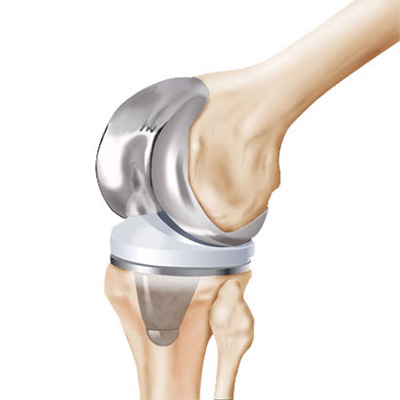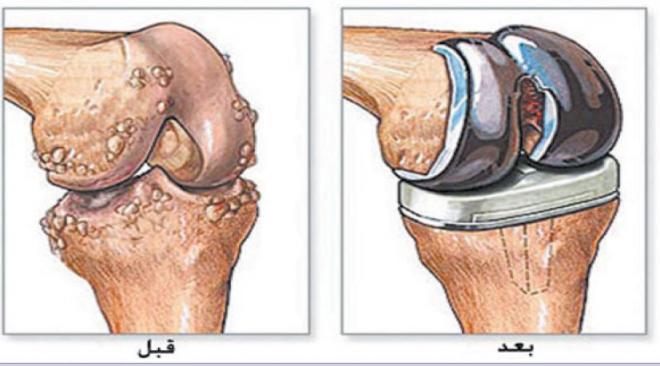The best exercises to treat shoulder tendonitis and the vitamin that helps strengthen them?

Exercises for Treating Shoulder Tendonitis
Shoulder tendonitis is a common injury that affects the shoulder, often accompanied by pain and stiffness. Therapeutic exercises play a crucial role in treating this condition and improving the shoulder’s condition. In this article, we’ll take a look at a set of effective exercises that can help treat shoulder tendonitis.
- Warm-up Exercises:
Before starting the main exercises, it’s essential always to warm up the shoulder to prepare it for the subsequent exercises. You can perform simple warm-up exercises such as:
- Gently rotate your shoulders backward and forward.
- Raise and lower your shoulders slowly.
- Rotate your arms in small circles.
- Muscle Stretching Exercises:
Muscle stretching exercises contribute to improving tendon flexibility and reducing tension. You can perform the following exercises:
- Across-the-Body Shoulder Stretch: Sit or stand up straight and gently stretch the affected shoulder across your body. Maintain the stretch for 15-30 seconds.
- Arm Extension Behind the Back: Sit or stand and hold the affected shoulder’s hand with your healthy hand, pulling it gently downward behind your back. Hold the position for 15-30 seconds.
- Muscle Strengthening Exercises:
Muscle strengthening exercises help improve shoulder stability and support the tendons. Among these exercises are:
- Light Weight Lifting: Use light weights and ensure that your arms stay close to your body. Lift the weights slowly to shoulder level and lower them gently. Perform several sets and repetitions.
- Contraction and Relaxation Exercises: Contraction and relaxation exercises for shoulder muscles can be done using moderate resistance.
- Range of Motion Improvement Exercises:
- 90-Degree Shoulder Stretch: Use a light pole and hold it with your hands at shoulder width. Lift it above your head and lower it slowly. This helps improve the range of motion.
- Circles Exercise: Sit or stand and gently draw circles with your shoulder, either rotating backward or forward. This helps improve shoulder range of motion.
- Balance Improvement Exercises:
- Stability Ball Exercises: Use a stability ball, sit on it, and try to balance. You can also perform exercises with the ball to enhance balance.
- Functional Exercises:
Over time, you can transition to functional exercises targeting the performance of daily activities. This includes lifting objects and reaching for objects both high and low.
It is crucial to consult a physician or physical therapist before starting any exercise program, as they can provide specific guidance for your condition. Also, avoid any exercise that causes excessive pain or tension on the tendons.
Remember to gradually increase the intensity and frequency of the exercises over time, and don’t hesitate to discuss your progress and any potential issues with your physical therapy professionals.
What Is the Best Treatment for Shoulder Tendonitis?
Inflammation of the tendons in the shoulder is a common condition that can cause pain and reduced range of motion in the shoulder. It is often the result of overuse or improper repetitive movements. This condition can include a wide range of issues such as Supraspinatus tendonitis, Infraspinatus tendonitis, Subscapularis tendonitis, Biceps tendonitis, and Rotator cuff tendonitis.
Determining the appropriate treatment:
The optimal treatment for shoulder tendonitis depends on the individual characteristics of the condition and its severity. Before starting any form of treatment, it is essential to consult with a doctor or physical therapist for evaluation and to develop an appropriate treatment plan. Here are some possible options for treating inflammation in shoulder tendons:
- Physical Therapy: Physical Therapy Exercises: A physical therapist can guide you through a set of exercises that target strengthening and stretching the muscles surrounding the shoulder and improving range of motion. Manual Therapy Techniques: Manual therapy can be used to relieve tension in the tendons and improve muscle balance. Heat and Cold Therapy: Ice can be used to reduce inflammation and pain, while heat can increase blood flow and relieve muscle tightness.
- Medications: Non-Steroidal Anti-Inflammatory Drugs (NSAIDs): These medications can help reduce pain and swelling. Steroidal Anti-Inflammatory Preparations (such as cortisone): These preparations can be injected directly into the affected area to reduce inflammation.
- Rest and Activity Modification: Avoiding Activities That Aggravate the Injury: It’s important to avoid activities that increase pain and irritate the tendons. Temporary Use of Support: A shoulder brace or sling can be used to immobilize the shoulder and reduce pressure on the tendons.
- Surgery:
If previous treatments do not provide relief, and pain persists with poor progress, surgery may be an option. The choice of surgery depends on the type and severity of the injury and may include tendon repair or the removal of damaged tissues.
The treatment of shoulder tendonitis requires accurate assessment by a medical professional and commitment to the treatment plan. It’s important to understand that treatment often takes time and effort. Avoiding exceeding the limits of pain and following medical guidance can be key to successful treatment and restoring the shoulder to its normal function.
Can Massage Treat Tendonitis?
Tendonitis is a common condition that occurs when tendons in the body become inflamed due to injury, overuse, or heavy lifting. Tendonitis can lead to sharp pain and reduced range of motion, affecting individuals’ daily quality of life. In this context, many people wonder if massage can be an effective treatment for this condition.
Understanding Tendonitis:
To understand whether massage can be an effective treatment for tendonitis, we must start by understanding this condition. Tendons are strong fibrous tissues that connect muscles to bones and play a crucial role in limb movement. When tendons are subjected to stress or injury, inflammation can occur in the affected area.
Benefits of Massage:
Massage is a technique that involves massaging muscle and tendon tissues to improve blood circulation, reduce tension, and enhance the sense of relaxation. It has many benefits, including:
Pain Relief: Massage can help alleviate pain by reducing tension in the muscles surrounding inflamed tendons. Improved Blood Circulation: Massage contributes to increased blood flow to the affected area, helping to reduce inflammation. Increased Range of Motion: Massage can improve tendon flexibility and increase the range of motion in the shoulder or any other affected area.
Can Massage Treat Tendonitis?
Despite the mentioned benefits of massage, it cannot be considered a direct treatment for tendonitis. Massage can be part of a comprehensive treatment plan to help alleviate pain and improve the sense of relaxation, but it cannot directly treat the underlying cause of tendon inflammation.
Effective treatment for tendonitis typically involves a range of steps, including:
- Rest and avoiding activities that aggravate the injury.
- Using ice or heat to reduce inflammation and pain.
- Taking non-steroidal anti-inflammatory drugs (NSAIDs) as directed by a doctor.
- Physical therapy sessions to strengthen muscles and increase range of motion.
- In severe cases, surgical treatment may be necessary.
While massage can help alleviate pain and increase comfort for individuals with tendonitis, it cannot be considered a direct treatment for this condition. If you are suffering from tendonitis, it’s important to consult your doctor for a precise evaluation and an appropriate treatment plan that includes necessary measures for recovery and avoiding the worsening of the problem.
Does Walking Affect Tendonitis?
Walking is a low-impact physical activity that is generally beneficial for overall health and fitness. However, there are times when walking can cause or exacerbate tendonitis. In this article, we will discuss how walking can affect tendonitis and how to maintain tendon health while engaging in this activity.
What Is Tendonitis?
Tendonitis is a condition that occurs when the tendons in the body become damaged due to excessive stress, injury, or repetitive movements. These tendons connect muscles to bones and play a crucial role in movement and joint stability. When they become inflamed, it can result in pain, swelling, and reduced range of motion.
How Can Walking Affect Tendonitis?
- Increased Stress: Walking for extended periods or on hard surfaces can lead to increased stress on the tendons in the feet and ankles. This excessive stress can contribute to tendon irritation and an increased risk of injury.
- Improper Footwear: Wearing inappropriate shoes during walking, such as those unsuitable for your foot type or lacking adequate support, can increase the risk of tendonitis.
- Poor Walking Techniques: Using improper walking techniques may place abnormal pressure on the feet and ankles, leading to tendon irritation.
How to Prevent Tendonitis While Walking:
- Wear Proper Shoes: Choose shoes that fit your foot type and provide adequate arch and ankle support. Regularly inspect your shoes to ensure they show no signs of damage or wear.
- Use Correct Walking Techniques: Ensure you practice proper walking techniques, such as keeping your elbows bent at a 90-degree angle and walking with a natural, steady pace.
- Rest and Stretch: Avoid walking for extended periods without breaks. Stretch and strengthen the muscles around the tendons regularly.
- Muscle Massage: Benefit from regular massage sessions to maintain muscle flexibility and reduce tension.
Walking is a healthy and beneficial activity for many individuals, and in general, it does not lead to tendonitis. However, it’s important to consider proper walking techniques and select appropriate footwear to prevent excessive stress on the tendons. If you are experiencing pain or tendonitis due to walking, consult your doctor or a physical therapy professional for advice and appropriate treatment.
What vitamin strengthens shoulder tendons?
The shoulder is one of the most complex and injury-prone joints in the body. Tendons that connect muscles to bones play a crucial role in shoulder stability and movement. To maintain the health and strength of these tendons, proper nutrition and overall health care are essential. Here, we will discuss important vitamins that strengthen shoulder tendons.
- Vitamin C:
Vitamin C is one of the most important vitamins that promote tendon health and strength. It plays a vital role in collagen production, a fundamental protein in tendons and connective tissues. Vitamin C helps maintain the strength and flexibility of tendons while reducing the risk of tearing.
- Vitamin D:
Vitamin D contributes to the absorption of calcium and phosphorus in the body, both of which are essential minerals for bone and tendon health. Vitamin D deficiency can lead to weakened bones and tendons, increasing the risk of injury.
- Vitamin E:
Vitamin E is an antioxidant that helps protect tendons and tissues from oxidative damage. It also promotes blood flow to the tendons, aiding in their nourishment and healing.
- Vitamin K:
Vitamin K is essential for regulating blood clotting processes in the body and plays a role in maintaining and strengthening tendons. It helps prevent excessive bleeding in tendons in case of injury.
- Vitamin B:
Vitamin B includes the B-complex group, such as biotin, B5, B6, and B12. These vitamins play a crucial role in converting food into energy and enhancing the function of the nervous and muscular systems. Strengthening these functions contributes to tendon and muscle health.
- Zinc:
Zinc is one of the essential minerals that play a role in the formation of collagen and other structural proteins in the body. Zinc deficiency can lead to tendon weakness and deterioration.
- Protein:
While not a vitamin, protein is essential for the formation and strengthening of tendons. A healthy diet should include protein sources such as lean meats, fish, eggs, and nuts.
To maintain the strength and health of shoulder tendons and reduce the risk of injury, it is important to include these vitamins and minerals in your daily diet. If you experience weak shoulder strength or tendon issues, it is advisable to consult a doctor or a nutrition specialist for an evaluation and guidance toward an appropriate diet and proper healthcare.
How long does it take to recover from shoulder tendonitis?
Shoulder tendonitis is a common issue that affects many people. Improving the condition of shoulder tendons requires time and proper treatment. The duration of recovery depends on several factors, including the severity of inflammation, the treatment methods used, and the patient’s adherence to medical guidelines. In this article, we will discuss the recovery period for shoulder tendonitis and the factors that influence it.
Factors affecting the recovery duration:
- Severity of inflammation: If shoulder tendonitis is mild and does not involve significant tearing or damage to the tendons, the recovery period is typically shorter. If there is significant tearing or major damage to the tendons, the recovery will be longer and may require intensive medical care.
- Type of treatment: Physical therapy and therapeutic exercises can help improve the condition of shoulder tendons, and this may require a certain amount of time. In severe cases, surgical intervention may be necessary, and the recovery duration after surgery depends on the complexity of the procedure and the postoperative healing period.
- Compliance with treatment: The patient’s compliance with treatment and medical guidance plays a significant role in determining the recovery duration. If the treatment is followed diligently, and the body is given enough time to recover, the recovery period is typically shorter.
- Age and overall health: The recovery duration can vary based on the patient’s age and overall health. Younger and healthier individuals may recover more quickly.
In conclusion, the recovery period for shoulder tendonitis can vary widely depending on the factors mentioned above. It is essential to consult with a healthcare professional for a proper evaluation and to determine the most appropriate treatment plan and recovery expectations based on individual circumstances.
Recovery Duration in Common Cases of Shoulder Tendonitis:
- Mild Shoulder Tendon Inflammation: In mild cases that do not involve significant tearing, recovery can take several weeks to a couple of months through rest and physical therapy.
- Minor Tendon Tears: Recovery may take from 3 to 6 months, and in some cases longer, depending on the severity of the tear and the effectiveness of treatment.
- Major Tears and Surgery: After surgery, recovery can take from 6 months to a year or more, depending on the complexity of the procedure and the post-operative rehabilitation.
The recovery duration for shoulder tendonitis depends on several factors, including the severity of inflammation, the type of treatment pursued, and the patient’s compliance with the treatment. It is crucial to follow the guidance of medical professionals and physical therapists to ensure a successful recovery and the restoration of normal shoulder function.
Can Shoulder Tendonitis Be Cured?
Shoulder tendonitis is a common condition that can lead to severe pain and limited shoulder movement. It can result from various factors, including overuse, injuries, aging, and certain conditions like arthritis. What are the chances of recovery from this condition?
Early Diagnosis and Treatment:
Prompt diagnosis and early treatment can play a significant role in a patient’s recovery from shoulder tendonitis. If you are experiencing shoulder pain or difficulty with shoulder movement, it is essential to consult a physician for assessment and an accurate diagnosis. Diagnosis may involve a physical examination and medical imaging such as X-rays or magnetic resonance imaging (MRI).
Multiple Treatment Approaches:
Treatment methods depend on the severity and cause of shoulder tendonitis and the patient’s condition. Common treatments include:
Physical Therapy and Therapeutic Exercises: Special exercises and physical therapy sessions can help strengthen the muscles around the shoulder and increase tendon flexibility, which can alleviate pain and improve movement.
Medications: The physician may recommend pain relievers or anti-inflammatory medications to reduce pain and inflammation.
Steroid Injections: These injections can help reduce inflammation in the shoulder.
Rest and Avoidance of Painful Activities: In some cases, it may be necessary to avoid activities that exacerbate pain and stress on the shoulder until recovery is achieved.
Surgery:
In cases of severe shoulder tendonitis and significant tears, surgery may be necessary. The surgeon will repair the tears and restore tendon function. After surgery, the recovery period can be longer, and the patient may require physical therapy sessions to regain movement and strength.
Recovery and Prevention:
Most cases of shoulder tendonitis can be successfully treated, and complete recovery is possible when following the guidance of physicians and specialists. After recovery, patients should adhere to preventive recommendations to prevent a recurrence of the problem. This includes strengthening the muscles around the shoulder and avoiding excessive stress on it.
In conclusion, recovery from shoulder tendonitis is possible with early diagnosis and appropriate treatment. It is essential to start treatment as soon as possible and adhere to the treatment plan to ensure full recovery and a return to daily life without pain and discomfort.
Is Hot Water Beneficial for Shoulder Tendonitis?
Muscle and tendon inflammations are common issues that affect many people, often occurring in areas like the shoulders. One of the traditional methods for pain relief and increasing tendon and muscle flexibility is using hot water or heat therapy. But is it genuinely beneficial for shoulder tendonitis?
Heat Therapy:
Heat therapy is a common method for pain relief and muscle relaxation. Heat is typically applied in the form of hot water through soaking or placing a hot pack on the affected area. Heat is believed to help increase blood flow to the affected area and alleviate muscle contractions.
Potential Benefits of Hot Water for Shoulder Tendonitis:
Pain Relief: Hot water can act as a muscle and tendon relaxant, increasing their blood supply and relieving pain.
Increased Tendon Flexibility: Heat helps dilate blood vessels, contributing to increased flexibility of tendons and muscles, which can be beneficial for improving range of motion.
Muscle Relaxation: Hot water can aid in relaxing tense and tight muscles, reducing pain and enhancing comfort.
How to Properly Use Hot Water:
Appropriate Temperature: Hot water should be at a tolerable and non-harmful temperature for the skin. The temperature is preferably around 39-40 degrees Celsius. Duration of Treatment: Hot water should be used for at least 15-20 minutes to obtain its full benefits. Beware of Burns: Prolonged exposure of the skin to hot water should be avoided, and it should be ensured that the temperature is safe. When to Avoid Using Hot Water:
If you have a recent shoulder injury, it requires ice first to reduce inflammation. If there is severe swelling in the shoulder. Medical Consultation:
Before using hot water as part of the treatment for shoulder tendonitis, it is always essential to consult a doctor or physical therapist. They may recommend heat therapy based on your individual condition and the severity of tendon inflammation.
In conclusion, hot water can be beneficial as part of the treatment for shoulder tendonitis to alleviate pain, improve muscle and tendon flexibility, and enhance comfort. However, consulting a medical professional before starting any heat therapy is crucial to ensure it is suitable for your health condition and individual diagnosis.
What Are the Symptoms of Shoulder Tendonitis?
Shoulder tendonitis is a common condition that causes pain and a decrease in shoulder movement. It can have a significant impact on a person’s quality of life. In this article, we will explore the symptoms of shoulder tendonitis and how to recognize them.
- Shoulder Pain: One of the primary symptoms of shoulder tendonitis is pain in the affected area. The pain can be sharp and throbbing or chronic and continuous. Often, the pain worsens when attempting to lift or move the arm.
- Difficulty in Shoulder Movement: Shoulder tendonitis can lead to significant difficulty in shoulder movement. The affected person may struggle to lift or rotate the arm. These movements can be painful and restricted, affecting their ability to perform daily activities normally.
- Swelling and Redness: In some cases, shoulder tendonitis may be accompanied by swelling in the affected shoulder area. Swelling may be accompanied by redness of the skin over the shoulder.
- Muscle Weakness: Due to pain and reduced shoulder movement, individuals with tendonitis may notice muscle weakness in the shoulder’s surrounding muscles. They may have difficulty performing tasks that require shoulder strength.
- Clicking or Popping: Some people with shoulder tendonitis may feel clicking or popping sensations in the shoulder area during movement. These sounds may result from abnormal tendon rubbing due to inflammation.
In conclusion, recognizing the symptoms of shoulder tendonitis is essential for early diagnosis and treatment. If you experience these symptoms, it is advisable to seek medical attention and follow the recommended treatment plan for a faster and more effective recovery.
Risk Factors:
The symptoms of shoulder tendonitis are influenced by several factors, including:
- Excessive Physical Activity: Overexercising can increase the risk of tendonitis.
- Excessive Stress on the Shoulder: Such as carrying, lifting, loading, or pulling objects improperly.
- Aging: The chances of wear and inflammation increase with age.
If you are experiencing symptoms that indicate shoulder tendonitis, you should consult a doctor for a precise evaluation and diagnosis, and to receive appropriate treatment. Treatment options may include physical therapy, anti-inflammatory medications, therapeutic exercises, or, in more advanced cases, surgery.

















